Avoid excessive water bills and severe structural damage to your home when your plumbing springs a leak. Knowing how to find where a leak is coming from allows you to take prompt action to fix it.

homeandgardeningguide.com gathered helpful information to guide you in locating and fixing water leaks when your plumbing system fails.
How To Detect a Plumbing Leak
Regardless of how well-installed your plumbing system may be, leaks can happen and remain hidden for some time. The following are ways to confirm and find water leaks in your plumbing system.
Monitor Your Water Usage and Bill
Your monthly water bill contains your usage in gallons/units. It may also include a bar graph comparing your usage to previous months. Average water usage typically remains in the same range from month to month.
When you detect an abnormal rise in your water bill, chances are you have a leak somewhere between your water meter and your faucets.
Note: Visitors or guests in your home over days or weeks may cause fluctuations in your water usage.
Read Your Water Meter
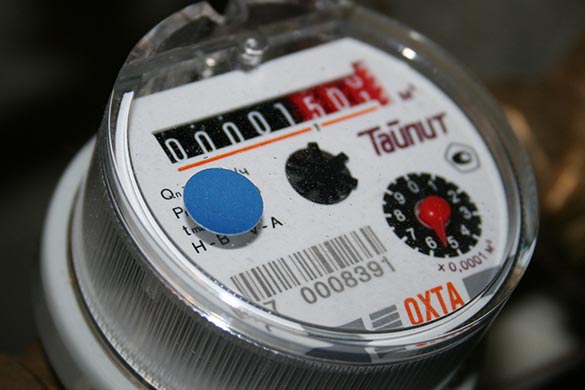
Your water meter is one of the best ways to detect a leak in your plumbing system. Here’s how to do it:
- Close all faucets
- Verify that the dishwasher, washing machine, and other water-supplied appliances are turned off
- Verify that your water heater is not refilling
- Read your water meter, mark down the numbers and the time
- Return to your water meter after one hour and read the meter again
If your water meter reading changes in this time, you have a slow-moving leak somewhere in your plumbing system.
Note: If your water meter noticeably continues to run, chances are you have a fast-moving leak. Verify that all of the water is shut off in the home and recheck your meter to confirm.
Tip: If your water meter is located at the street, you can determine if the leak is in your home or outside by closing the shut-off valve located near the home on your main water supply pipe and rerunning the test.
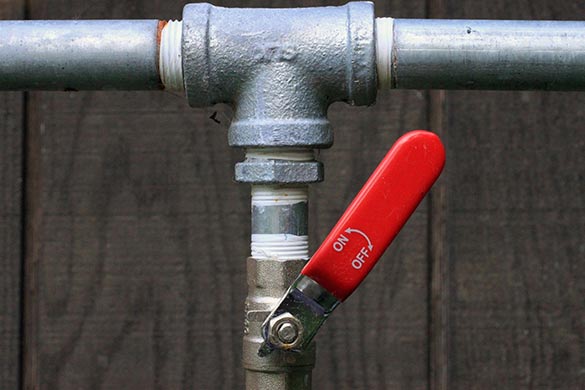
Evaluate Your Yard
If you notice a patch of grass, plants, or trees that is much greener and growing faster than other areas, it could indicate that one of your buried water supply lines is leaking. If the break is large enough, puddles of water may form and persist in low-lying areas of your yard.
If you believe you have a leak in your water supply line or irrigation system, return to the “Read Your Water Meter” section to confirm the leak.
Solution – If you confirm a leak in your main water supply line (outside of your home), the following will help you get the leak under control:
- Before any digging occurs, call 8-1-1 to have any other buried utility lines identified and clearly marked.
- Shut off the water.
- Allow the excess water to drain or be absorbed.
- Carefully dig until the damaged portion of the pipe is exposed.
- Remove the damaged section of pipe and replace it.
- Once the repair is made, turn on the water to verify the seal.
- Fill in the hole.
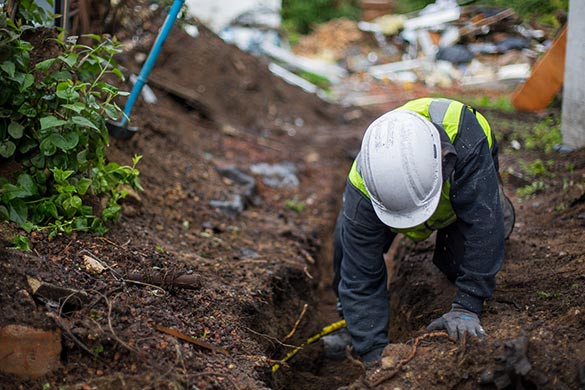
Note: You may need to add extra dirt/soil to the excavated area as some may have been eroded away by the water.
Tip: Fill several 5-gallon buckets with water for use while the water main is shut off.
Kitchen and Bathroom Leaks
With the water supply shut off, open the cabinet doors beneath your sinks, clear them out and shine a bright flashlight inside. Look for moisture and/or corrosion on the P trap, supply lines, fittings, and valves. You should also be on the lookout for:
- Water stains
- Dampness
- Mold
- Mildew
- Buckled wood
- Peeling material
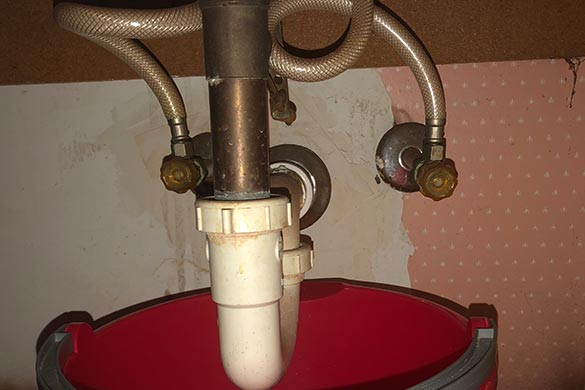
Solution – If any of the above are found, wipe away any moisture, tighten fittings and connections, and turn the water back on to see if this resolves the problem. If the leak is in the supply line, shut the water off again, and replace the supply line.
Note: You can repeat this process for any of your water-supplied fixtures and appliances like your dishwasher and refrigerator.
To detect a leak in your toilet’s water tank, add a few drops of food coloring to the water and wait. After 10 minutes, check the bowl. If the water in the bowl changes color, your leak is coming from the flushing mechanism (easy fix).
Solution – Adjust or replace the arm, buoy, and flapper assembly.
Water accumulating around the toilet base indicates a problem with the wax ring or the centering of the toilet over the drain (also an easy fix).
Solution – Remove the toilet bowl, replace the wax ring, and re-center the toilet over the drain.
For clogged toilets, read homeandgardeningguide.com/repairs/plumbing/plunging-clogged-toilet-drain/ for a fast and easy solution.
Ceilings, Walls, and Floors
Some of the most recognizable signs of a plumbing problem occur on ceilings, walls, and floors as wet spots or stains.
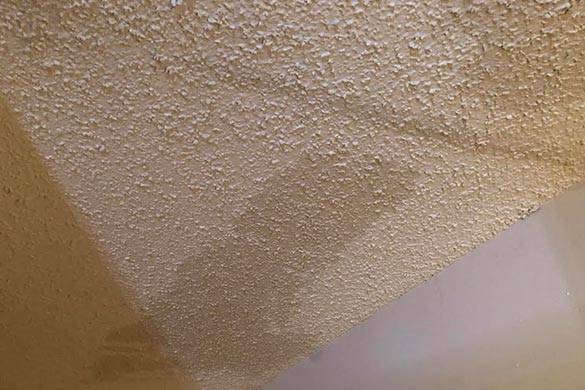
Wet, cracked, warped, and/or spongy spots in the floor are strong indicators of a plumbing malfunction in the wall or from a nearby water-supplied appliance.
Stains occurring on ceilings and walls, peeling paint or wallpaper, and mold or mildew growth indicate that the plumbing has failed somewhere in those pipes.
Tip: Water follows gravity to the lowest point of least resistance. Especially in multiple story homes, signs of a leak may be far away from the actual plumbing or appliance malfunction.
Solution – Due to the nature of these leaks, it is not recommended to cut out your drywall in search of the plumbing malfunction. Call a plumber to pinpoint the origin of the leak and get it repaired more efficiently.
Locating Plumbing Malfunctions
In this article, you discovered how to identify a plumbing malfunction, locate it, and take steps to fix it or have it fixed.
Knowing how to identify a leak in your plumbing system will help you take quick action to prevent flooding and structural damages to your home.
Allowing water to run from a faulty plumbing system can result in costly bills and catastrophic damages to your property.
Sources:
fyi.extension.wisc.edu/house/about-the-house/plumbing/
miamidade.gov/global/water/leak-detection.page
epa.gov/sites/production/files/2017-02/documents/ws-ourwater-detect-and-chase-down-leaks-checklist.pdf
Visit http://www.homeandgardeningguide.com/repairs/plumbing/ for more plumbing articles, resources, and tips.
The post How To Find Where a Leak Is Coming from appeared first on http://www.homeandgardeningguide.com
No comments:
Post a Comment